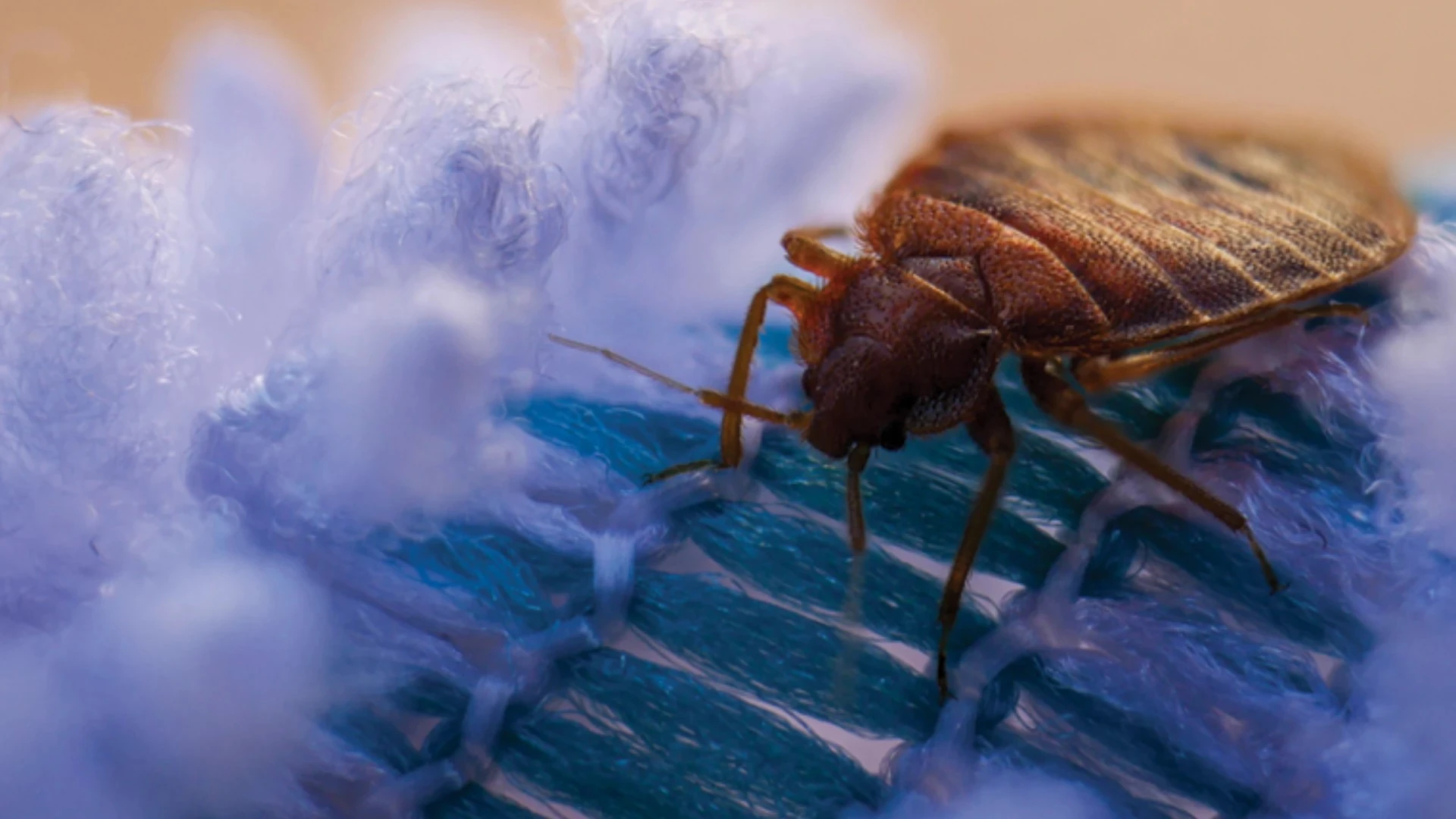Termite Institute Web Site Offers Homeowners
Latest Information
on Termite Control
Homeowners spend an estimated $5 billion a year on termite control. Now they can find everything they need to know about termites — including prevention tips and how to get professional help eliminating termites — at the Termite Institute (www.termiteinstitute.com), BASF’s new and improved Web site resource.
The Termites Institute site includes expert articles written by BASF termite specialists and an "Ask an Expert" section where homeowners can submit questions to BASF specialists. The site also features a "Find a Professional" section where homeowners can find a list of pest management professionals in their area. The site is continually updated with the latest information on termites, frequently asked questions, and more.
*****
UF researchers: Termites’ gut reactions show how to improve renewable fuel
Termites’ destructive power might help solve one of the nation’s most pressing economic quandaries: sustainable fuel production.
After years of genetic sequencing, University of Florida (UF) researchers are beginning to harness the insects’ ability to churn wood into fuel. That ability involves a mixture of enzymes from symbiotic bacteria and other single-celled organisms living in termites’ guts, as well as enzymes from the termites themselves.
The team from UF’s Institute of Food and Agricultural Sciences spent two years dissecting and analyzing gene sequences of more than 2,500 worker termite guts. In total, they identified 6,555 genes from the termites and associated gut fauna involved in the digestive process.
As the researchers reported Oct. 15 in the online journal Biotechnology for Biofuels, they’ve begun to identify which of these genes encode for enzymes that could significantly improve the production of cellulosic ethanol, a fuel made from inedible plant material that the U.S. Department of Energy estimates could replace half of our gasoline if the production process could be made more cost effective.
"Termites are very unique creatures, and this research helps give the most complete picture of how their systems collaborate to very efficiently break down really tough biological compounds to release fermentable sugars," said UF entomologist Mike Scharf, who leads the research.
The team has identified nearly 200 associated enzymes that help break down the problematic plant compound lignocellulose. This compound is the most costly barrier to wide-scale production of cellulosic ethanol because it must be broken down by intense heat or caustic chemicals.
Termites, however, are able to almost completely break down lignocellulose through simple digestion.
"The termite gut is a complicated and exotic package of biodiversity that manages these tasks with an efficiency that you really have to admire," said Claudia Husseneder, a specialist in the molecular biology of termites at Louisiana State University who was not associated with UF’s research. "Mike’s work is on the cutting edge of understanding this system."
Termites and their associated single-cell symbiotic organisms probably won’t have much to do with the processes that result from the work — except for their genes, of course. Scharf said that enzyme-producing genes will be transferred to a more controllable creature.
This has commonly meant that the genes would be transferred into genetically modified fungi or bacteria. However, Scharf said the genes would likely be transferred into other insects, such as caterpillars, to produce the enzymes on an industrial scale.
"Insects have played an important role in how this planet functions for millions of years," Scharf said. "They still have a lot they can teach us. There are still many ways we can learn to benefit from Earth’s six-legged inhabitants."
*****
Transport Termiticide
Insecticide Delivers Fast,
Long-Lasting Results
Transport Termiticide Insecticide from FMC Professional Solutions is a broad label product that delivers strong results by combining fast-acting, non-repellent control and long-lasting residual, even in markets with severe termite pressure, the company reports.
In tests, Transport TI has demonstrated that it clears structures of termites within 30 days. The dual-action technology delivers quick control of termites while providing the structure with long-lasting perimeter protection from the three main genera of subterranean termites, including Reticulitermes, Heterotermes and Coptotermes.
Transport TI is a wettable powder formulation packaged in 7.5-ounce water-soluble packets. Transport has a flexible label that makes it a versatile pest control solution, allowing both pre- and post-construction termite control treatments as well as exterior general pest control applications. This allows pest management professionals the opportunity to control both general pests and termites without switching products. For lower volume applications with the convenience of smaller (0.3-ounce) water soluble packet, FMC offers Transport GHP insecticide, which controls a wide range of general pests, such as bed bugs, ants, fleas, ticks, roaches and spiders.
For more information about Transport TI or Transport GHP visit www.fmcprosolutions.com or www.fmcezlearn.com.
*****
Nisus Corporation’s
Bora-Care Prevents
Termite Tubing On Concrete
Nisus Corporation, manufacturer of Bora-Care termiticide, has been awarded U.S. Patent No. 7597902 for Bora-Care’s ability to prevent termite tubing on concrete. Nisus says it discovered through its testing that in addition to treating wood, Bora-Care would also stop termite mud tubing on non-wood surfaces like concrete. Furthermore, the company said Bora-Care’s active ingredient is not broken down by UV light or by the high pH of cementitious materials. According to Nisus, the non-volatile patent mixture of glycols also carries the active ingredient into termites’ tubes to target the pest during their tube construction.
Following the discovery that borates worked as an effective barrier on non-wood construction materials, a number of such termite entry sites were added to the U.S. EPA-registered Bora-Care label, which addressed concerns about termite entry through bath traps and plumbing penetrations as well as tubing on foundation walls. Green points from NAHB, LEED and EarthCraft green building programs are available to builders who choose a Bora-Care treatment, the company says. For more information, visit www.nisuscorp.com.
*****
LSU: 10 Tips To Reduce The Possibility Of Termite
Problems
Fall through spring is when most folks add new plants to their landscape. This is the best time of year for planting trees, shrubs and ground covers, but it is also a time to be cautious about creating problems that could bring termites into customers’ homes.
LSU AgCenter experts suggest the following to reduce the possibility of termite problems in your customers’ homes. Pest management professionals may want to make these recommendations to customers as they plant new landscape products.
- Situate gutters and slope landscape beds so water drains away from the house.
- Keep mulch in beds adjacent to the house about 12 inches from the foundation.
- Do not add fill dirt or garden soil around the foundation or under porches or steps without contacting the pest control/termite control company for retreatment.
- Do not disturb the chemical barrier at the base of the slab or around pilings by digging into it during bed preparation.
- Promptly remove all scrap wood and wooden debris from the landscape.
- Pine straw appears to be the mulch that is least attractive to termites. Avoid using wood chips to mulch beds adjacent to the house or other structures.
- Use metal edging, decorative bricks or border plants to edge beds. Avoid landscape timbers, railroad ties or other wooden materials that may serve as food for termites.
- When watering, avoid spraying water against the foundation of the house.
- Leave at least 2 inches of space between the house and a deck or other wooden structure outside. Build decks and other structures on concrete pads and so the pads and posts can be treated.
- Do not allow clinging vines, such as English ivy or creeping fig, to grow on the wall of the house.
*****
Access Panels from Diversified Plastics Drive ‘Add-On’ Revenues, Grow Profits
Pest management professionals eager to drive revenues during the critical spring termite season may want to add access panels from Diversified Plastics to their service mix. "We’ve been involved in the pest control industry for more than 20 years, so we understand the termite market is somewhat volatile," observes Larry Hiner, president, Diversified Plastics, Sand Springs, Okla. "It can be up one year and down the next."
One way PMPs can even out those highs and lows is by expanding their service offerings to include the installation of crawlspace access panels, thereby generating additional revenue from existing termite customers. "It enhances the value of a customer’s home, while providing PMPs and other service providers with ready access to crawlspaces. It’s an easy sale once the advantages of the service are pointed out to the customer."
Diversified Plastics offers a full line of access panels, including:
E-Z Access II features a removable center panel that provides easy access to wall voids, bath traps and moisture-prone areas where termites, carpenter ants and other destructive pests cause the most damage. Ideal for bathrooms, kitchens, laundry areas and wet bars, E-Z Access II is a proven profit generator, according to Hiner. "It’s one of the most popular products in our line." E-Z Access II comes with all the necessary hardware for quick and easy installation.
Cover-Up Access Panels are an economical and attractive alternative to more costly, labor-intensive methods for accessing bath traps in homes and commercial buildings. Available in both standard and custom sizes, Cover-Up Access Panels require no special tools or carpentry skills to install.
Mini-Port Access Covers are ideally suited for cabinets and other tight spaces where a neat, professional appearance is required. An attractive and cost-effective alternative to larger units, Mini-Port Access Covers measure 2 inches and 4 inches, respectively, and require no screws or fasteners to install.
The latest addition to the company’s product line is a "small-frame version" of the E-Z Access Crawlspace Door. The new unit, which measures 26 inches by 34 inches, features an attractive design, foam weather stripping insulation to prevent air drafts, and a keyed lock, Hiner said. The removable door measures 18 inches by 24 inches. Like other panels in the product portfolio, the E-Z Access Crawlspace Panel is easy to install and paintable.
To learn more about access panels from Diversified Plastics, call 800/245-2597 or visit www.div
sales.com.

Explore the February 2010 Issue
Check out more from this issue and find your next story to read.
Latest from Pest Control Technology
- Rentokil Terminix Expanded in Key Markets with 2024 Acquisitions
- In Memoriam: Joe Cavender
- Certus Acquires Green Wave Pest Solutions
- Liphatech Adds Alex Blahnik to Technical Team
- Do the Right Sting: Stinging Insect Identification, Management, and Safety
- VAGA's 8th Annual Veterans Thanksgiving Appreciation Dinner
- Clark's Blair Smith on the Response to Increased Dengue Fever Cases in Southern California
- WSDA, USDA Announce Eradication of Northern Giant Hornet from U.S.





